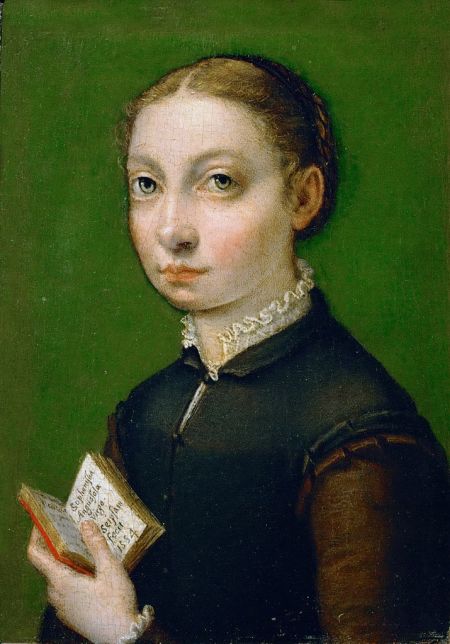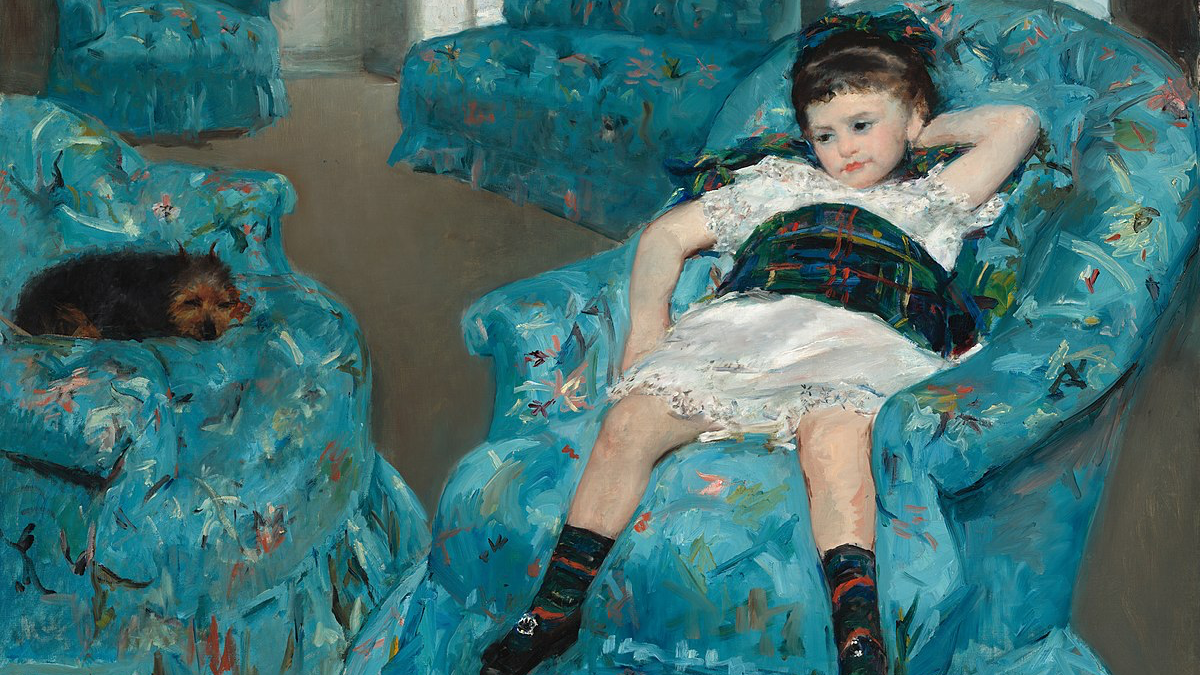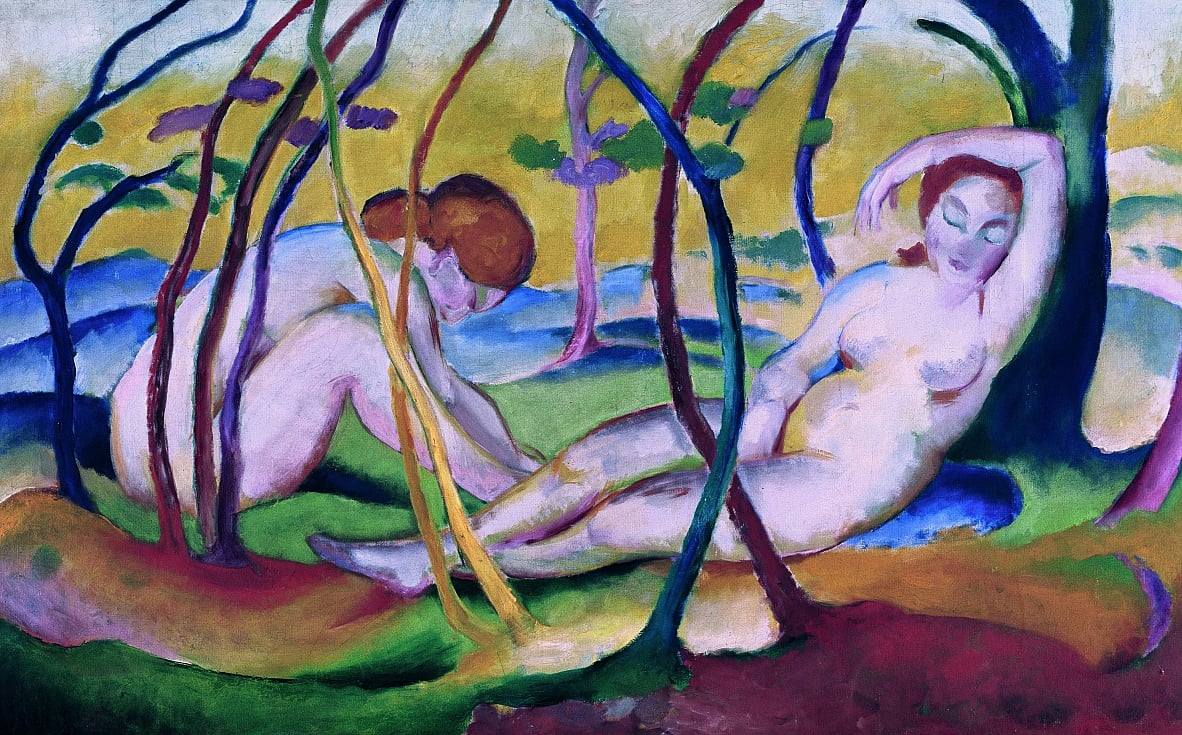
8 Female Renaissance and Baroque Artists You Should Know
Michelangelo, Leonardo, Titian, Caravaggio, the list goes on… Museums are devoted to them. Movies and documentaries depict them. Art historians spend lifetimes tracing their steps and artistic codes. They are immortalized across the pages of numerous books. Their talents are deservedly celebrated, but sadly, many artists have been left behind for far too long. The issue of representation is a reoccurring predicament throughout the course of art history. This includes many female artists of the Renaissance and Baroque periods. Because of this, Artsper has highlighted the careers and talents of 8 female Renaissance and Baroque artists!
1. Catharina or Caterina van Hemessen (1528-1565)

Throughout the late-middle ages and into the Renaissance and Baroque periods, women artists were most frequently the daughters of artists. This is the case for Catharina van Hemessen, a pivotal artist of the 16th-century. Her father, Jan Sanders van Hemsessen, was a distinguished painter in Antwerp. Well-known for his Mannerist style, van Hemessen focused primarily on religious subjects. Although it was her father who initially inspired her artistic curiosity, Caterina van Hemessen was interested in other painterly topics. Having an eye for rendering the delicate qualities of others around had fostered the perfect foundation for van Hemessen to become a portrait artist.
Her talents gained traction amongst the highest ranks of society. In fact, she even caught the eye of Maria of Austria, who invited van Hemessen to move from the Netherlands to her royal court, in Spain. After the death of Maria of Austria, van Hemessen was granted a life-long endowment. In her Self-Portrait, van Hemessen sits solemnly, in modest clothing, against a somber background. It is believed that van Hemessen is the first artist of any gender to have painted a self-portrait at an easel. Beyond this remarkable feat, she wanted to be remembered, not only as a woman who had a passionate love and hobby for artistry but, as a real, working artist. This is seen in the painting’s inscription: “I Caterina van Hemessen have painted myself / 1548 / Here aged 20.”
2. Sofonisba Anguissola (1532-1625)

When analyzing the canon of art history, Sofonisba Anguissola is one of the only female Renaissance artists to have achieved international recognition. Born into an aristocratic family in northern Italy, Anguissola was a prodigy of the Italian Renaissance. Thanks to her family’s wealth and connections, Anguissola was able to be amongst some of the most enlightened cultural and artistic minds of Europe at the time. Because of this, her talent caught the attention of many of the Masters of the period; such as Michelangelo, Van Dyck, and Vasari. She even was granted the opportunity to be an apprentice painter, a rarity for a woman at this time. Anguissola was made a lady-in-waiting in the court of Philip II, the king of Spain. During her years in the court, she put her artistic skills to use, painting the highest ranks of Spanish society, including the royal family, and the king himself.
3. Lavinia Fontana (1552-1614)

Born in Bologna, Italy, Lavinia Fontana was deeply embedded in the Mannerist style of painting. Art historians have attributed her as the first professional female artist in the course of art history. Beyond this incredible achievement, it is also believed that Fontana was the first female artist to have painted female nudes. She was the first female artist to use live models for inspiration. Beyond her interest in the female form, Fontana focused heavily on mythological and religious scenes. She eventually was indoctrinated into the Accademia di San Luca in Rome, by Pope Clement VIII. Because of this historic achievement, she and her family had the privilege of moving to Rome. Fontana received a number of accolades throughout her illustrious career, impacting the course of art history.
4. Artemisia Gentileschi (1593-1654)

Born in Rome on the cusp of the Baroque movement, Artemisia Gentileschi is one of the world’s most recognizable and celebrated female artists of this period. Following in the footsteps of her father, Orazio Gentileschi, Gentileschi was enamored by the style and artistry of Caravaggio. Gentileschi is known for her striking and violent scenes. While training in Rome, Gentileschi’s art teacher sexually abused her, which, in turn, fueled an artistic rage in the rendering of many of her paintings. Not only did Gentileschi have to endure the trauma which resulted from sexual abuse, but also, she experienced the ongoing shame of a public trial. She used her canvases as a vessel to expunge her trauma, pain, and suffering. Gentileschi focused primarily on women in allegorical images, often depicting strong women through the midst of their personal sufferings.
Gentileschi’s career spanned over four decades, and her talents did not go unseen. Some of her patrons included members of the Medici house and King Charles I of England. Although her talents were acknowledged during her own time, centuries later, art historians argued about the true painter behind her artworks. Those in doubt claimed Gentileschi’s paintings were too violent to have been painted by the “delicate” hand of a female artist. Many believed her father was the true mastermind behind her artworks. Fortunately, this theory has since been discredited. The world continues to shed light on the remarkable work of Gentileschi.
5. Giovanna Garzoni (1600-1670)

Best known for her delicate watercolor paintings, Giovanna Garzoni found interest in an array of subject matters. Most notably, plants, vegetables, animals, and portraits. Beyond this, she devoted many works to religious, allegorical, and mythological subject matter. Certain details about her life remain unclear, if not unknown. However, art historians can confirm that Garzoni painted and traveled throughout modern-day Italy, including Venice, Naples, Rome, Turin, and Florence. She even made her way outside of Italy, finding her way in Paris, which required a long journey at this time.
6. Judith Leyster (1609-1660)

A prominent female artist of the Dutch Golden Age was Judith Leyster. In fact, she was one of the first female artists to gain admission to Saint Luke’s Guild of Haarlem. Beyond her impressive schooling, Leyster was gifted in terms of her ability to create a myriad of styles of paintings. However, for centuries, as in the case of many other female artists, Leyster’s works were misattributed. Many art historians believed Frans Hals, or her husband, artist Jan Miense Molenaer, to have been the hand behind her paintings. Thanks to the discovery of a monogram, her artist signature, many of her works have since been correctly re-attributed.
Perhaps her most celebrated work is Self-Portrait. The painting exudes an air of confidence in her abilities and growing popularity amongst the Dutch academic painting community at the time. She depicts herself sitting beside a canvas, adorned in fine clothing. She presents herself as she is in the process of painting a violinist, but at this moment, she looks away from the painting to interact with the spectator. Her self-portrait remains one of the most celebrated Dutch Golden Age paintings, to this day.
7. Mary Beale (1633–1699)

Known to the world of art history as one of the first professional female artists in England was Mary Beale. Through her artwork and the stream of sales, Beale was able to support her family, relying solely on her artwork and art lessons as a full-time profession. She was known for her portraiture. Her talent gained traction throughout the nobility of English society, attracting many patrons from the court of King Charles II. Beale’s business as an artist was strengthened by the support of her husband. In fact, Charles, her husband, was her business partner and was in charge of bookkeeping. He recorded her daily activities which provided art historians with special insight into their business practices and Beale’s world as a female artist at the time.
8. Elisabetta Sirani (1638-1665)

Although she only lived to the age of 27, Elisabetta Sirani achieved great success during her short but fruitful career. Like other female artists of the time, Sirani was born into an artistic family. Her father was a painter himself, but by the time Sirani was only a teenager, she had already outpaced him in terms of artistic abilities. Starting at the age of 19, Sirani set out to financially support her family through artwork commissions. Her prominence began to grow throughout Bologna, catching the attention of Grand Duke Cosimo III de Medici, an alpha-patron of the arts.
Her paintings can be characterized as striking. Sirani enjoyed painting allegorical or biblical scenes, most of which feature female subjects. In terms of style, her work reflects the Baroque period, emphasizing an intense contrast of light and dark, known as chiaroscuro. Sirani eventually formed her own school, as she sought to teach and uplift other female artists throughout Bologna. Shortly after, she mysteriously died at the age of 27. The cause behind Sirani’s death remains a mystery and a source of historical debate to this day. Although her life was short, her impact was immense.
The withstanding impact of female artists…
The absence of female artists throughout art history remains a prevalent issue to this day. While these are only 8 powerful female artists, there are many more to discover and appreciate. To learn more about more change-making artists, explore Artsper’s selection of female artists.

About Artsper
Founded in 2013, Artsper is an online marketplace for contemporary art. Partnering with 1,800 professional art galleries around the world, it makes discovering and acquiring art accessible to all.
Learn more













